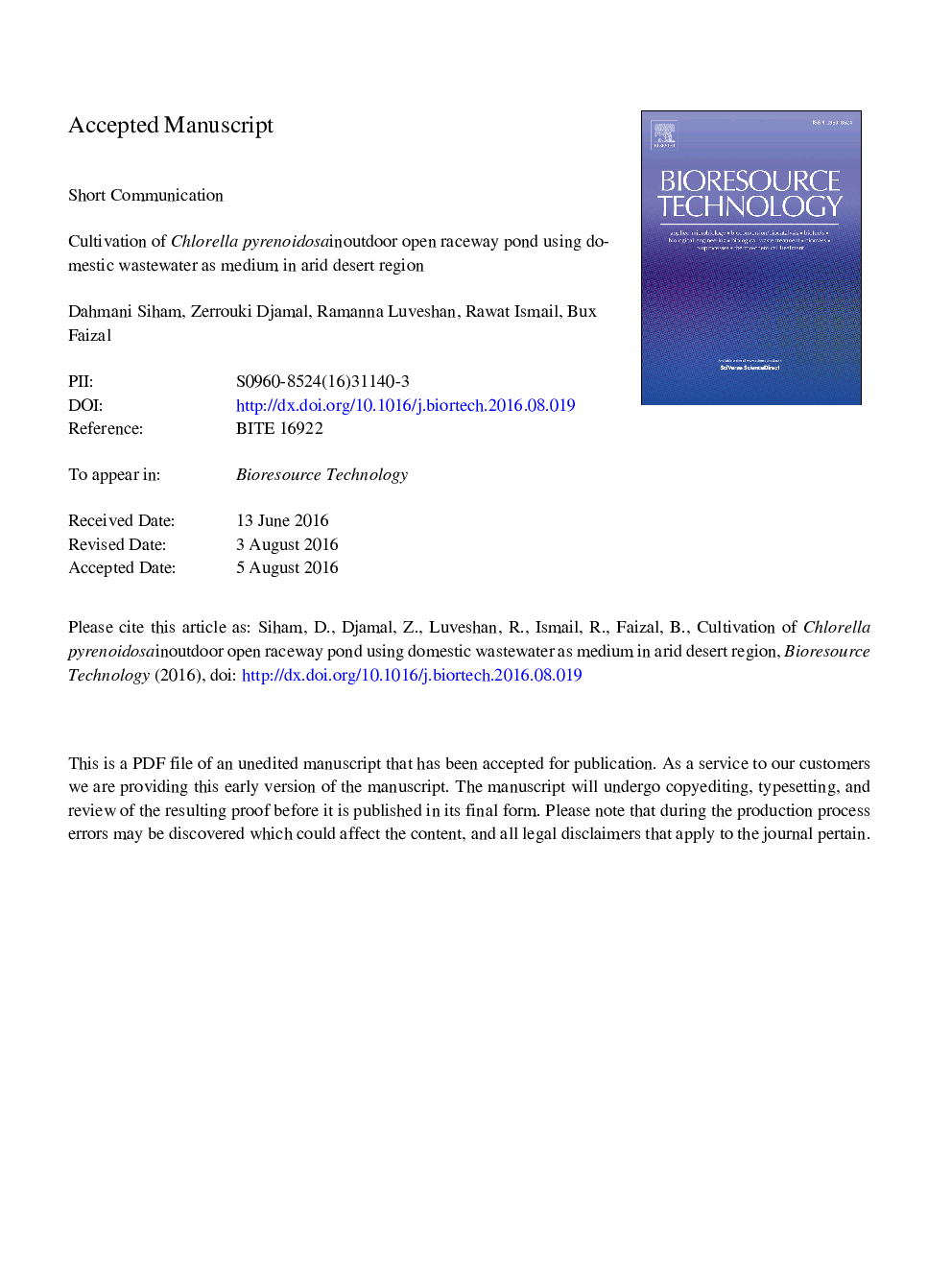| Article ID | Journal | Published Year | Pages | File Type |
|---|---|---|---|---|
| 7070099 | Bioresource Technology | 2016 | 18 Pages |
Abstract
Chlorella pyrenoidosa was cultivated in secondary wastewater effluent to assess its nutrient removal capabilities. Wastewaters were obtained from a wastewater treatment plant located in Ouargla, Algeria. The experiments were conducted in winter under natural sunlight in an outdoor open raceway pond situated in the desert area. The highest biomass of the microalgae was found to be 1.71 ± 0.04 g/L. Temperatures ranged between 18 and 31 °C. The average annual insolation was no less than 3500 h with an annual solar irradiance of more than 2000 kWh/m2. Analyses of different parameters including COD, NH4+-N and TP were conducted throughout the cultivation period. Their average removal efficiencies were 78%, 95% and 81% respectively. The results demonstrated the potential of nutrient removal by microalgae grown on secondary wastewater in arid areas.
Related Topics
Physical Sciences and Engineering
Chemical Engineering
Process Chemistry and Technology
Authors
Siham Dahmani, Djamal Zerrouki, Luveshan Ramanna, Ismail Rawat, Faizal Bux,
